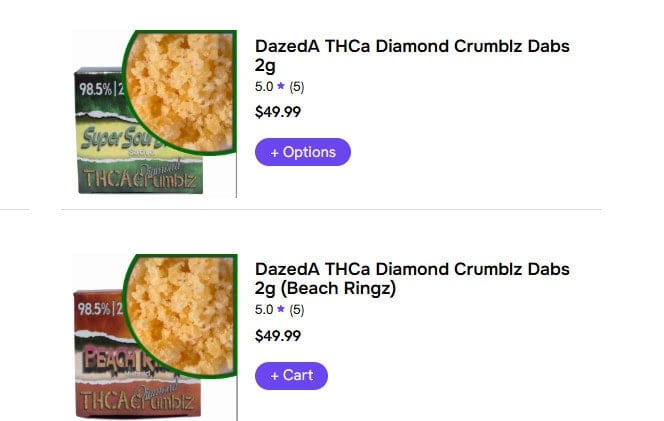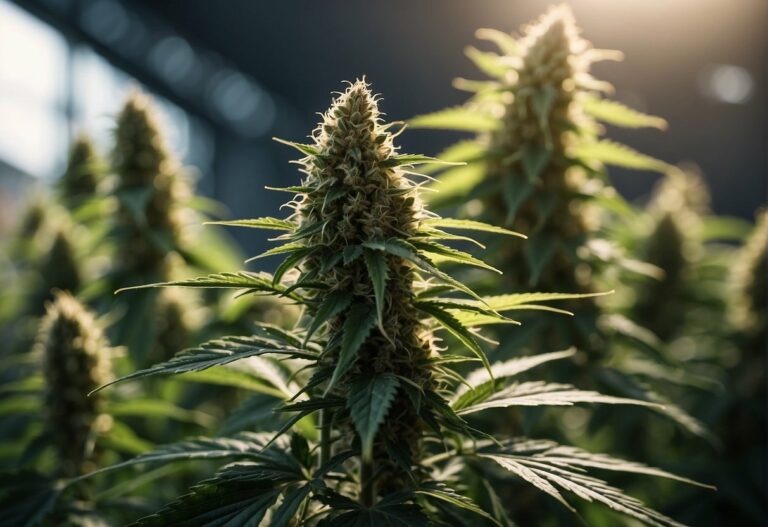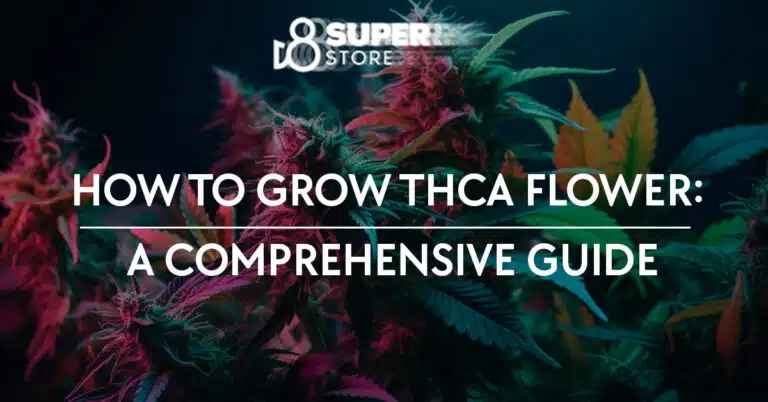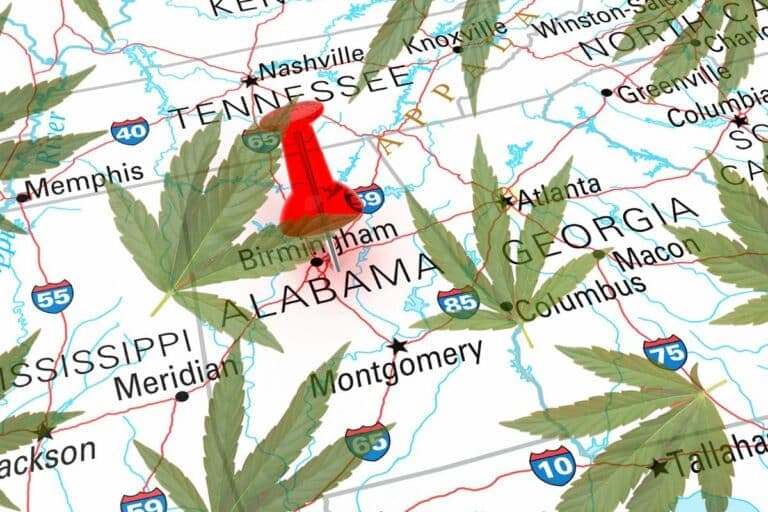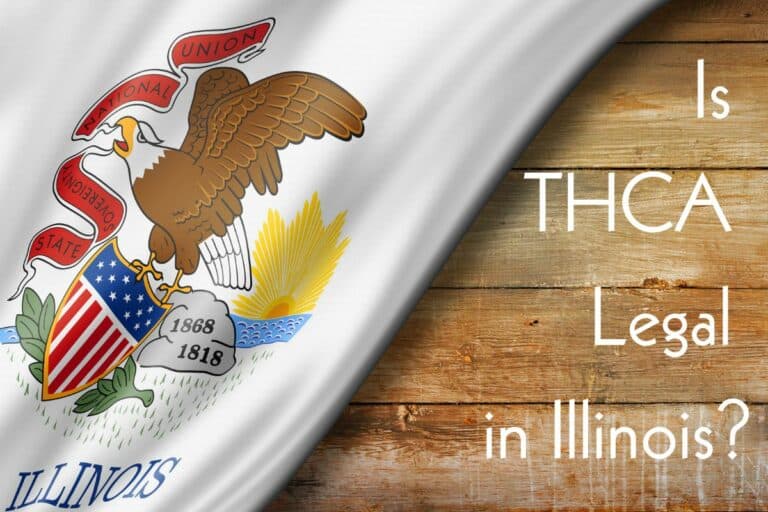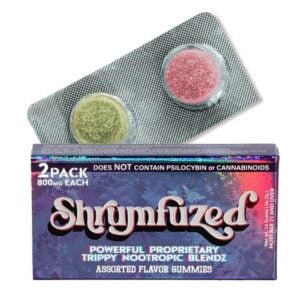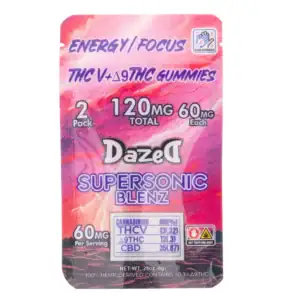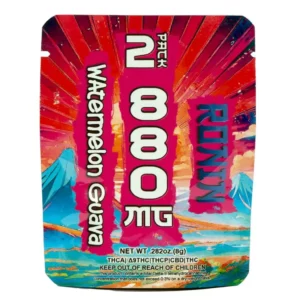How to Decarb THCa Diamonds: A Step-by-Step Guide to Activation
Transforming weed breathes life into the ordinary, making it extraordinary. Think of that epic scene in superhero films where everything hinges on one pivotal moment. That’s the thrill decarbing brings to the table. It changes plain old THCa in marijuana into THC with just a bit of heat, opening the door to joy and euphoria. If you’re exploring cannabis for kicks or health, mastering the art of turning THCa into golden THC is crucial. Brace yourself for a thrilling journey into the art of cannabis alchemy. Trust me, what comes next is nothing short of mind-blowing.
Table of contents
The process of decarboxylation requires the application of heat over a period of time to activate the cannabinoids. THCa diamonds, due to their concentrated form, need careful attention to ensure even and effective conversion. If you’re planning to ingest cannabis for medical or recreational purposes, it’s necessary to decarb THCa diamonds to ensure that you’re receiving the desired effects. Employing the right technique can lead to an optimal experience, preserving the terpenes for flavor as well as maximizing the potency of your product.
Understanding Decarboxylation
Before you can fully appreciate the process of transforming THCa diamonds into THC, it’s essential to grasp the concept of decarboxylation and the science that enables this transformation.
What Is Decarboxylation?
Decarboxylation is a chemical reaction that releases carbon dioxide (CO2) from a carboxyl group present in various cannabinoids such as tetrahydrocannabinolic acid (THCa) and cannabidiolic acid (CBDA). This process is vital for converting non-psychoactive cannabinoids into their active forms, which interact with your endocannabinoid system to produce therapeutic effects.
The Chemistry Behind Decarboxylation
At its core, decarboxylation is a heat-induced reaction. When you apply heat to cannabinoids like THCa, the carboxyl group (-COOH) detaches and evolves as CO2, a process observable in chemical structures. This reaction alters the compound’s configuration, turning it from its acid form into its active state, such as THC or CBD.
Decarboxylation and THCa
With THCa diamonds, your goal is to remove the carboxyl group to unlock the psychoactive potential of THC. Decarboxylating THCa typically involves heating it at a specific temperature for a calculated duration to ensure maximum conversion to THC without degradation. It’s a delicate balance: too little heat, and not all THCa will convert; too much, and you risk vaporizing the coveted THC.
Preparation for Decarboxylation
| Step | Action | Details / Best Practices |
|---|---|---|
| 1. Workspace Setup | Choose a clean, ventilated area | Decarboxylation releases vapors; proper airflow ensures safety and better results. |
| 2. Gather Tools | Oven-safe glass dish / silicone mat, dab tool, oven thermometer, parchment paper | Avoid plastic or non-heat-resistant containers. A thermometer ensures accurate temps. |
| 3. Preheat Oven | Set temperature to 220–250°F (105–120°C) | Low and slow prevents terpene loss and preserves potency. |
| 4. Weigh & Portion | Measure THCa diamonds before heating | Helps track dosage and yield post-decarb. |
| 5. Break into Smaller Pieces | Use a dab tool to split large diamonds | Smaller pieces heat more evenly, reducing the risk of partial decarboxylation. |
| 6. Spread Evenly | Place diamonds in a single layer on parchment paper/dish | Prevents clumping and ensures uniform heating. |
| 7. Monitor Time | Heat for 25–40 minutes depending on batch size | Check regularly; look for bubbling (CO₂ release) and change to golden/amber hue. |
| 8. Cool Down Safely | Let material rest at room temperature after removal | Prevents degradation and makes handling easier. |
| 9. Storage | Transfer to airtight glass jar after cooling | Store in a cool, dark place to maintain potency and freshness. |
| 10. Testing (Optional but Ideal) | Send sample to lab or use potency test kit | Confirms successful decarboxylation and verifies Δ9-THC content. |
Decarboxylation is a crucial step in activating the psychoactive properties of THCa diamonds, which requires precise temperature control and proper equipment to ensure purity and potency retention.
Selecting Quality THCa Diamonds
When preparing for decarboxylation, the purity of your THCa diamonds is paramount. Look for clear, crystalline structures with minimal impurities. The higher the purity, the more potent your final product will be. Avoid diamonds that look cloudy or contain excess plant material, as these can affect the consistency and effectiveness of your decarboxylation process.
Equipment Needed for Decarboxylation
Here’s what you’ll need:
- Parchment Paper: To prevent sticking and preserve the terpenes and cannabinoids.
- Baking Sheet: Will serve as a stable platform for your diamonds during the decarboxylation.
- Oven Thermometer: Essential for monitoring your oven’s actual temperature to avoid overheating or underheating the diamonds.
- Grinder (optional): If your diamonds are large, consider gently breaking them down with a grinder to ensure an even decarboxylation process.
Make sure to preheat your oven, verifying the temperature with your oven thermometer. Spread the diamonds on parchment paper placed on the baking sheet without overcrowding, allowing for uniform heat exposure.
Decarboxylation Process
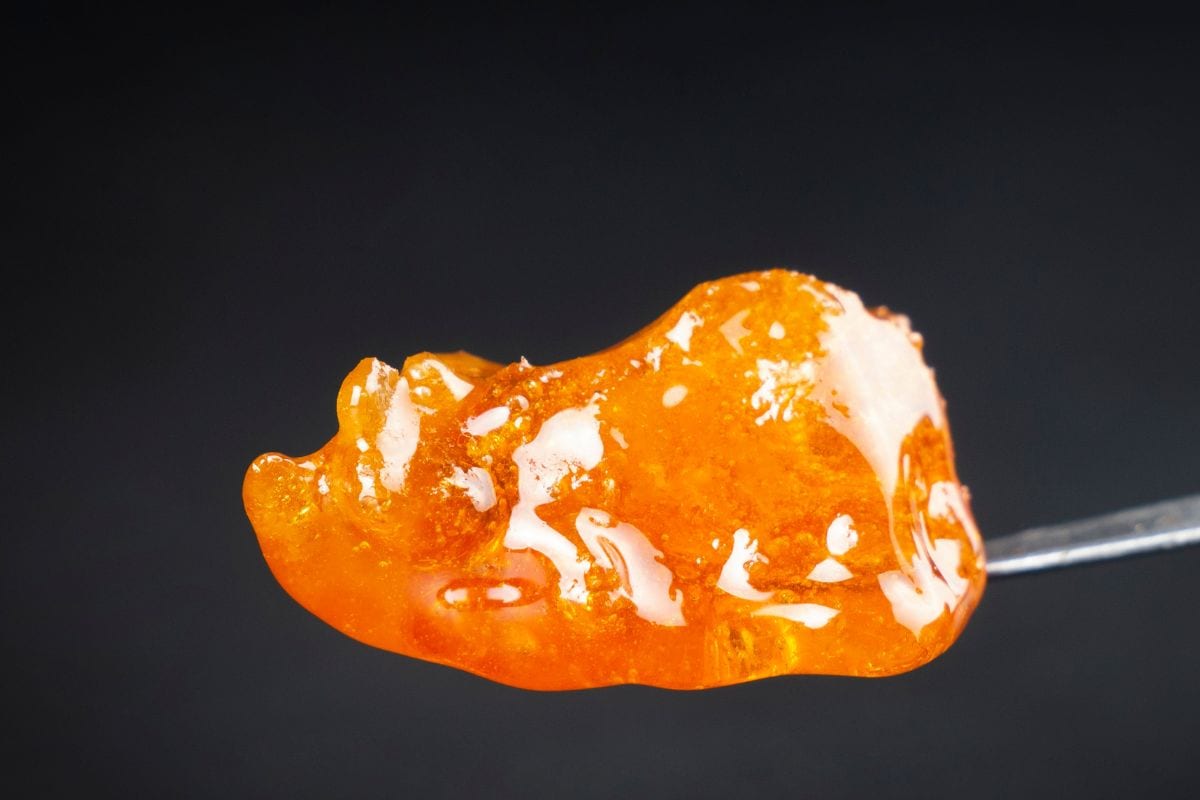
The decarboxylation process is a critical step in activating the psychoactive potential of THCa diamonds, requiring precision with heat and time. Carefully controlling your oven’s temperature ensures the transformation from THCa to THC.
Preheating Your Oven
Preheat your oven to 220-260°F (107-127°C), a temperature range sufficient to decarb THCa without degrading the THC. Use an oven thermometer to verify accuracy, as built-in oven thermostats can often be unreliable.
Arranging THCa Diamonds for Decarbing
Spread THCa diamonds in a single layer on a parchment paper-lined baking tray. Ensure they are spaced out evenly to allow for consistent heat exposure. Given the potent nature of THCa diamonds, you don’t need a large amount to feel effects.
Monitoring Temperature and Time
Place the tray in the oven and decarb for approximately 20-40 minutes. Monitor the oven temperature closely throughout, as fluctuations can affect the decarboxylation efficiency. Utilize a timer to avoid overexposure which can lead to a compromised product.
Post-Decarboxylation Handling
Once you have successfully decarboxylated your THCa diamonds, proper post-processing protocols are critical to ensure the stability and purity of your now active THC.
Cooling and Storing Decarboxylated Diamonds
After decarboxylation, it’s vital to cool the diamonds promptly to stabilize the newly converted THC. Immediate cooling helps prevent any degradation of the compound.
- Cooling Process:
- Transfer decarboxylated diamonds onto a non-stick surface.
- Allow them to cool at room temperature.
- Once cooled, if needed, place diamonds in a refrigerator for rapid cooling.
- Storage Solutions:
- Store cooled diamonds in an airtight container to prevent contamination.
- Keep the container in a cool, dark place to minimize THC degradation.
- For long-term storage, consider a vacuum-sealed environment to ensure purity.
When handling your pure THC product for infusion, make sure to work in a clean environment and use precise measurements to maintain the integrity of your infusions. Your careful attention to the cooling and storing process will ensure that you preserve the potency and terpene profile of your decarboxylated diamonds.
Utilizing Decarboxylated THCa Diamonds

After successfully decarboxylating THCa diamonds, these concentrated forms of cannabinoids are ready for use in a variety of applications. Decarboxylation activates the THCa into THC, which is necessary for experiencing the compound’s full effects when used in edibles or tinctures.
Making Edibles with Decarbed Diamonds
To create potent and accurately dosed edibles, start by determining the desired THC content per serving. For instance, if your decarbed THCa diamonds are verified to have 80% THC, and you aim for a 10 mg THC edible, you’ll need 0.0125 grams of the decarbed diamonds per serving (since 80% of 0.0125g is approximately 10 mg).
Procedure:
- Finely grind the correct amount of decarbed THCa diamonds.
- Melt your chosen carrier fat (like butter or coconut oil) over a low heat.
- Stir in the ground diamonds until fully dissolved, ensuring constant temperature control to prevent degradation of the THC.
- Incorporate this infusion into your edible recipe as you would normally use your carrier fat.
Creating Infused Oil and Tinctures
Infused Oil: When making infused oils with decarbed THC diamonds, measure your oil volume first, and then calculate the amount of decarboxylated diamonds needed based on the desired final concentration of THC.
- Heat your chosen carrier oil (olive, coconut, etc.) on low heat.
- Add the decarbed diamonds until they dissolve, frequently stirring to ensure even distribution.
- Once fully integrated, the oil can be used in various culinary applications or topically.
Tinctures: Tinctures require a solvent like high-proof alcohol to extract the THC.
- Mix the decarbed diamonds into the alcohol and shake gently.
- Allow the mixture to sit, shaking periodically, for a few days to a few weeks.
- Strain the mixture through a fine sieve or cheesecloth to remove any undissolved particles.
This tincture can then be used as a sublingual drop, providing a discreet and precise dosing method. Remember that whether you’re vaping, smoking, or dabbing, decarbed THCa diamonds should be handled with care, respecting the potency and starting with small amounts to gauge effect.
Safety and Legal Considerations
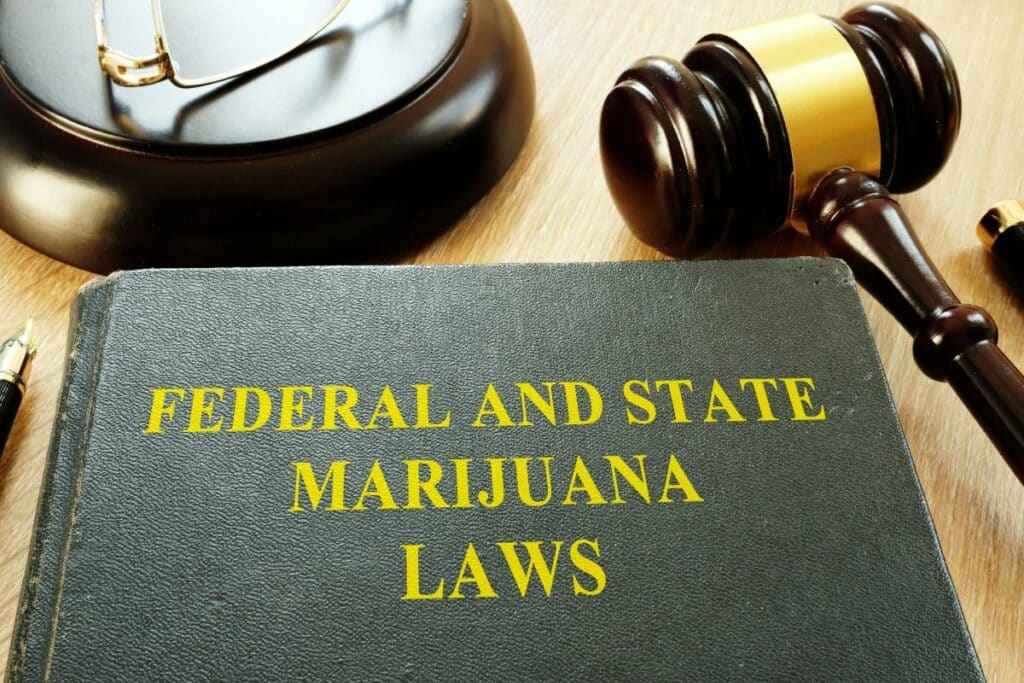
Before attempting to decarb THCa diamonds, it’s imperative you understand the legal landscape and safety protocols. This section will navigate you through the necessary precautions and the legalities around the decarboxylation process.
Understanding Legal Implications
Decarboxylation is the chemical process of removing a carboxyl group from a molecule – in the context of cannabis, this means converting THCa to THC through heat. Legality plays a significant role since THC is psychoactive and, therefore, regulated. It’s essential to be informed about your local and national laws regarding handling and processing of the cannabis plant. In many regions, possession of cannabis in any form, including THCa diamonds, might be subject to legal restrictions, and unauthorized conversion could lead to criminal charges.
- Check local regulations: Ensure that both possession and processing of cannabis are legal in your area.
- License and permissions: You may need authorization or a license for decarboxylation, even for personal use.
Safe Handling and Usage
Safety is paramount when working with any form of the cannabis plant. Decarboxylation involves heating the material, which should be done with caution to prevent burns or fire hazards.
- Equipment: Use a reliable oven or decarboxylator designed for cannabis to ensure consistent temperatures.
- Ventilation: Perform the process in a well-ventilated area to avoid the accumulation of fumes.
- Personal protective equipment (PPE): Consider wearing gloves and eye protection to prevent any contact with the potent material.
- Do not leave the decarbing material unattended.
- Ensure all devices are functioning correctly to avoid overheating or malfunctions.
Advanced Techniques and Tips
When decarboxylating THCa diamonds to maximize potency and flavor, precision is key. Proper technique can enhance the quality of your product, while understanding how to troubleshoot common issues ensures consistent results.
Enhancing Potency and Flavor
To achieve the highest potency and preserve the complex flavor profile of your diamonds, temperature control is critical. Start by preheating your oven to precisely 220-240°F. Maintaining this range activates THCa into THC without vaporizing delicate terpenes that contribute to flavor and aroma.
- Equipment: Use an oven with accurate temperature settings and a calibrated thermometer to monitor the process.
- Time: Typically, decarb THCa diamonds for about 20 to 40 minutes.
- Sealing: Protect the diamonds by wrapping them in parchment paper and then sealing them in a mason jar. This method helps in containing the terpenes.
Troubleshooting Common Issues
Encountering problems during the decarboxylation process is common, but most are easily rectifiable.
Overheating: If the diamonds are exposed to temperatures too high, you risk degrading the THC and losing terpenes.
- Solution: Consistently check your oven’s temperature and adjust as needed.
Uneven Activation: To ensure even decarboxylation, the diamonds should be evenly spread out and not stacked on one another.
- Solution: Stir the diamonds halfway through the process to promote an even conversion from THCa to THC.
By adhering to these advanced techniques and tips, you can maintain the integrity of your THCa diamonds, optimizing both potency and flavor while minimizing the potential for common complications.
Additional Applications and Variations
When you decarboxylate THCa diamonds, you’re activating the compound to unlock its full potential. Your approach may change based on the final cannabis product you desire, whether it’s for infusing edibles or enhancing concentrates.
Varying Methods for Different Cannabis Products
- Cannabis Flower: For flower, a traditional decarboxylation process involves a low-temperature oven. You’ll want to evenly spread your ground flower on a baking sheet and heat it at around 220-245°F (104-118°C) for 30-40 minutes. This gentle heating action converts THCa into active THC without degrading terpenes too much.
- Concentrate: Concentrates like waxes, shatters, or THCa diamonds require a careful approach due to their potency. Since THCa diamonds are nearly pure, they need minimal heat to initiate decarboxylation. You can do this via dabbing, where the high temperature of the dab rig will instantly decarboxylate the diamonds as you inhale. Alternatively, you can heat them on a lined baking tray at a lower temperature of around 200°F (93°C) for a shorter duration.
- Cannabis Extracts: For other cannabis extracts such as oils or live resin, you’ll need to use a double boiler setup. Heat the extract over water, ensuring that the temperature doesn’t exceed 245°F (118°C). Stir consistently to ensure uniform decarboxylation.
- Cannabutter: When making cannabutter, the process of decarboxylation happens concurrently with infusion. The ground cannabis flower is typically simmered with butter over low heat for 2-3 hours. This slow infusion not only decarboxylates the THCa but also infuses the butter with the active THC.
By understanding the nuances of decarboxylation for various cannabis products, you can ensure the potency and effectiveness of your edibles, topicals, or inhalables. Paying close attention to temperature and duration will maximize the quality of your final product.
Frequently Asked Questions
Decarboxylating THCa diamonds is a key step in activating their psychoactive potential. Here’s how to pinpoint the specifics of the process to optimize your results.
What is the optimal temperature for decarboxylating THCa into THC?
To convert THCa into THC effectively, heat the diamonds at a temperature between 220-245°F (104-118°C). This range is considered optimal for facilitating the decarboxylation reaction without degrading the THC.
How long should one heat THCa diamonds to ensure full decarboxylation?
Heating THCa diamonds for approximately 30-45 minutes at the optimal temperature range should ensure full decarboxylation. However, size and purity may affect the duration slightly.
What is the typical THCa content in diamond extracts?
Diamond extracts usually contain a high concentration of THCa, often exceeding 90%. This high potency is what makes them an ideal choice for conversion into psychoactive THC through decarboxylation.
Are there any specific methods to decarb THCa diamonds for use in edibles?
For edibles, you can decarb THCa diamonds by dispersing them in a fat-based carrier such as oil or butter. Heat the mixture gently, allowing the THCa to convert into THC, which then infuses into the fat.
How does the decarboxylation process alter the potency of THCa diamonds?
Decarboxylation converts the non-psychoactive THCa in the diamonds into the psychoactive THC, thus increasing the potency in terms of psychoactive effects. The process doesn’t create more cannabinoids but rather activates existing ones.
Can decarbed THCa diamonds be used directly in recipes, and if so, how?
Yes, once decarbed, THCa diamonds can be directly incorporated into recipes. Grind the decarbed diamonds to a fine powder and incorporate them into your dish of choice, taking care to evenly distribute them for consistent potency.



